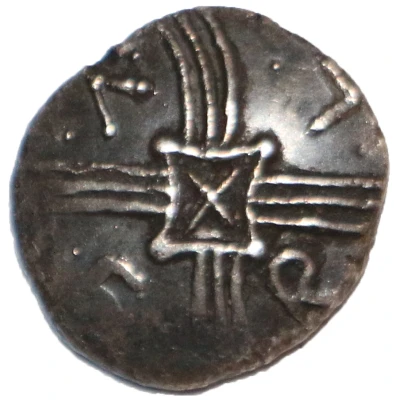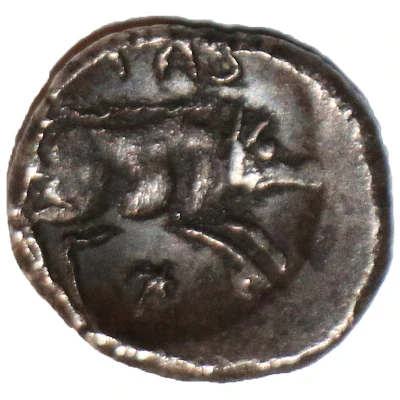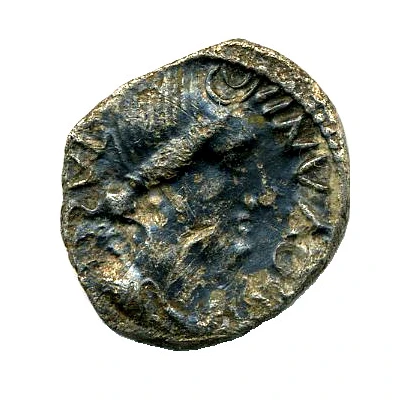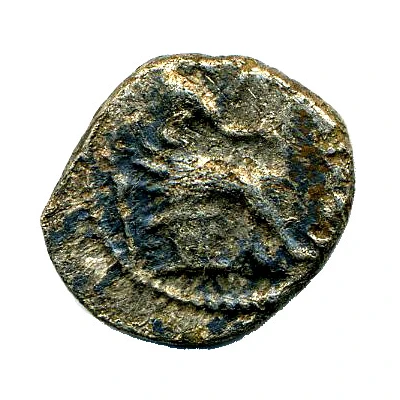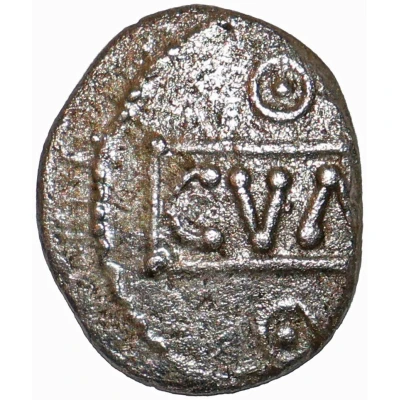
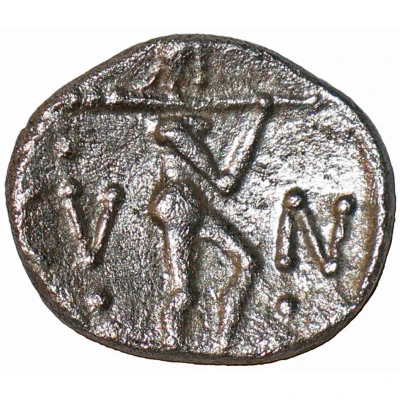

© John Conduitt (CC BY-SA)
Silver Unit "Trinovantian W" - Cunobeline Walker
| Silver | 0.7 g | 12 mm |
| Issuer | Catuvellauni tribe (Celtic Britain) |
|---|---|
| King | Cunobeline (circa AD 9-40) |
| Type | Standard circulation coin |
| Years | 10-30 |
| Value | Silver Stater (1⁄50) |
| Currency | Stater |
| Composition | Silver |
| Weight | 0.7 g |
| Diameter | 12 mm |
| Shape | Round (irregular) |
| Technique | Hammered |
| Orientation | 3 o'clock ↑→ |
| Demonetized | Yes |
| Updated | 2024-10-09 |
| Numista | N#433867 |
|---|---|
| Rarity index | 97% |
Reverse
Figure walking right holding club on shoulders.
Letters in left field with pellet above and below. Letter in right field with pellet below.
Script: Latin
Lettering: CV - N
Comment
Cunobeline produced more than one type that circulated almost entirely in Kent, of which this is one. Cunobeline took control of Kent and his son, Adminius, was king of the Cantii.
The reverse figure might be Hercules, adapted from an intaglio (like one found at Verulamium). de Jersey, 2001, places it early in Cunobeline's reign on sylistic grounds.
Interesting fact
One interesting fact about the Trinovantian W coin is that it features a unique reverse design that depicts a stylized horse and rider, which is believed to represent the Celtic goddess Epona. This design is not found on any other coins of the Catuvellauni tribe, making it a distinctive feature of this particular coin.
